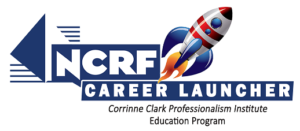By Madelyn Jones
The green signal flag is down — the race to the finish line is underway. Things are going along very well along the speedbuilding raceway; no speed bumps in sight. You manage to navigate around a series of small undulations. You are starting to get your cruise on. And then, out of the blue, your speed plateaus. The yellow caution flag drops. You find yourself in the same speed for over six months. You know that you at least avoided the red flag, but the yellow flag is warning enough to do more than just avoid hitting the wall. What should the speedbuilder take away from this lesson? One lesson learned must be “how to win the race,” not simply mastering “the course of least resistance” down the runway.
Any reporter or student will tell you what a challenge this process is. We have all been there. What can you do? We know perseverance and hard work is the key, but what should you work on to shake things up? You know that you could cruise along at the same measured pace and ultimately reach the finish line. But as you drive along, you know you cannot simply coast. What are some ways of successfully reaching inside yourself, summoning forth strengths you know are already there, waiting to facilitate your quest to go the extra mile?
Every speed instructor you have ever had probably has suggested the following at one time or another, but perhaps it’s time to revisit some techniques. Part of the secret to success is internalizing the “tried and true” techniques — whether you are behind your court reporting machine or racing to beat the clock.
Consider what your first speed instructor warned against: If you do not warm up your drill-writing fingers, they will not necessarily be in position to operate at their best capacity as you go down the long runway. Just as the race car driver behind the wheel has to call upon carefully practiced scenarios, so, too, should you enable your skill sets to include carefully rehearsed practice sessions that will seemingly spring to your aid in the final stretch.
Thus, your number one goal in support of the race to the finish line, going full-barrel down the straightway, is to take a page out of your speedbuilding instructor’s success manual: The first skill that will need to be rehoned is perhaps one of the most basic in court reporting, yet often one of the most overlooked: exercise.
Hurdle Number One: Exercising those fingers. Warm up every day for 15 minutes by writing finger drills. Many working reporters do this to keep their fingers limber and strong. Work on the ones that are more of a challenge for you. A very good book to refer to is Sten Ed’s Ultimate Finger Drill Book. In the long run, keeping up flexibility and speed through regular exercise is as necessary to building speed for court reporters as fast reaction time is to race car drivers. The winners, in either case, have their most essential, most basic skills on which to automatically rely when push comes to shove.
Likewise, several other crucial skills must be put into one’s tool box, to be drawn upon in the final stretch.
Hurdle Number Two: Reading and analyzing: Noting the old adage, “A word to the wise is sufficient,” here, then, are three words to the wise court reporter-in-training from one seasoned speedbuilding instructor: Read and analyze. No matter how many times you have consulted your notes to see where your fingers may have gone astray, it is of supreme importance to read and analyze your notes. This is very important.
Be sure to print out your vertical notes if you don’t have paper notes. Don’t hesitate to review and then once again proofread any notes you have taken, whether on paper or otherwise. Plan to incorporate this practice as well into your regular routine.
This form of self-monitoring will become another one of your most important tools to tune up for your race to your ultimate goal. Becoming proficient at identifying any areas of weakness is a strength — not a weakness. The most successful pros are those most adept at studying any errors and seeking ways to avoid repeating them.
Hurdle Number Three: Categorize and correct mistakes: While it may be self-evident to some, experienced speedbuilding instructors still have a most valid point when they remind us to “Use a pen to correct your notes.” This will aid in avoiding such errors in the future. In the process of dissecting your notes, you should have the following objectives:
a. Correcting speed-bump flaws: Look for how many times you are asterisking to correct an error. If you see you are correcting a word two or three times, stop this. This slows you down.
b. Reduction in hesitations: Look for words where there are hesitations in your writing and where you dropped as a result of the hesitation. Next, look for phrases and brief forms you could have used. If you learn new briefs, be sure to know them well enough to write them without hesitation. Practice those words. Such hesitations contribute to slowing you down.
c. Strategies to address misstrokes: Look for any pattern of continued misstroking. Identify your weaknesses. You may be dropping word endings; mark them and learn from them. Journal your misstrokes and log the corrected outline. You may want to eventually change how you write a word in your dictionary if it is something that repeats itself. But be careful not to create any conflicts.
d. Add to your brief toolkit: Look for phrases and brief forms you could have used. If you learn new briefs, be sure to know them well enough to write them without hesitation. Knowing additional briefs to draw upon when the road gets tough is another tool to facilitate your race when you may be flagging.
e. Incorporating corrections into your internal files: Take a stack of corrected notes and read them out loud as often as possible. The more you read your notes, the better you will be. This will help to rev your internal combustion engine when you need that extra spurt to the finish line.
You have already made it down the runway and you are now close to the finish line. You say to yourself, “What else can I do? I’ve given it my all.” These last few pointers help signal the way to career success. Don’t be left straggling so near the finish line. Speedbuilding instructors finally recommend the following tasks.
1. Transribe those tests: Transcribe as many as you possibly can. This is another opportunity to read your notes. So much is learned from the transcription process. You will avoid repeated spelling and punctuation errors. If you find you are dropping toward the end of a five-minute test, be sure you add more time to your practice takes.
2. Slow your roll. Take a good look at how well you know your theory. Go back and revisit those chapters you disliked writing the most. If you don’t analyze and resolve these issues, they will continue to slow you down. Be sure to work on accuracy as well as speed. Slow down and focus in order to speed up and write well.
3. Focus. Practice doesn’t make perfect. Perfect practice makes perfect. Take the time to practice mindful listening and stroking. You need to develop total concentration. You can practice for hours on end, but if your mind isn’t with you, your fingers, and your machine, little progress will be made. Take the time to notice when your attention has drifted off, and redirect it back over and over again to the task at hand. Make this a habit. Strive for getting into the proverbial “zone” where your brain and your fingers are working simultaneously.
4. Establish a specific daily plan. Set goals to practice a certain amount of hours outside of class. Literally, plan every hour of every week out. You will be surprised at how much more time you really have to practice if you stick to a schedule. Mix your practice up. For example, work on speed, numbers, word drills on one day. Work on accuracy, Q&A, brief forms the next day. Another part of your goal is to keep up the habit of regular practice, making your time management part of your clear pathway down the final sprint to success.
5. Do not look at your screen while writing. This will slow you down.
6. Keep a positive mindset. Since you will fail more tests than you will pass, you absolutely need to keep a positive mindset. Remind yourself what it was that inspired you to become a court reporter. Continued maintenance of a positive mindset is another key to remaining both self-confident and prepared at all times.
“Only those who dare to fail greatly can ever achieve greatly.” – Robert F. Kennedy
The mark of a true professional, likewise, is one who does not hesitate to set goals and take the time to train to reach them, at last coalescing all efforts into a successful pattern of attaining the goal waiting at the race’s end.
And so, you are on your way again. You are writing cleaner and quicker. You can see the checkered flag at the finish line. It’s all you! Yes, you crossed that finish line with an abundance of hard work, perseverance, and passion.
Madelyn Jones,CRI, is a court reporting instructor based in Granite Bay, Calif. She can be reached at maddy8181@hotmail.com.






